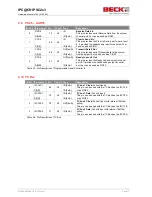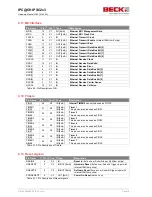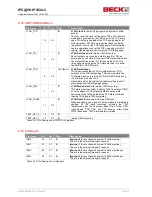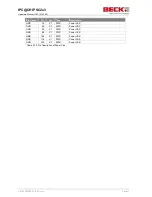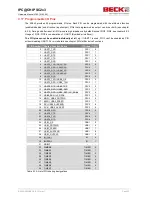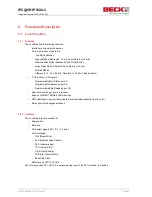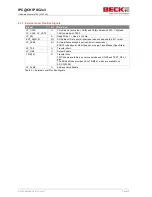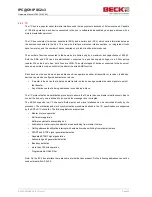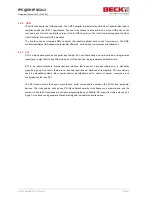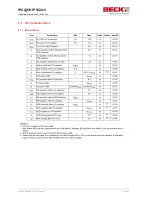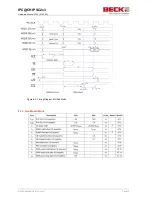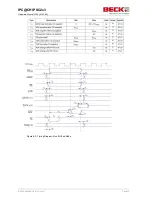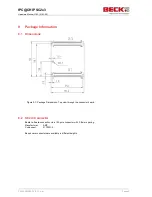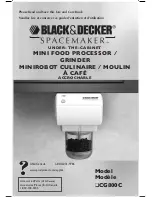
IPC@CHIP SC2x3
Hardware Manual V1.02 [01.03.09]
©2000-2009 BECK IPC GmbH
Page 30
6.2.3 I²C
The I²C bus is a popular serial, two-wire interface used in many systems because of its low overhead. Capable
of 100 kHz operation, each device connected to the bus is software addressable by a unique address, with a
simple master/slave protocol.
The I²C bus consists of two wires, serial data (SDA), and a serial clock (SCL), which carry information between
the devices connected to the bus. This two-wire interface minimizes interconnections, so integrated circuits
have fewer pins, and the number of traces required on printed circuit boards is reduced.
The number of devices connected to the same bus is limited only by a maximum bus capacitance of 400 pF.
Both the SDA and SCL lines are bidirectional, connected to a positive supply voltage via a 2.2k pull-up
resistor. When the bus is free, both lines are HIGH. The output stages of devices connected to the bus must
have an open-drain or open-collector to perform the wired-AND function.
Each device on the bus has a unique address and can operate as either a transmitter or receiver. In addition,
devices can also be configured as masters or slaves.
A master is the device that initiates a data transfer on the bus and generates the clock signals to permit
that transfer.
Any other device that is being addressed is considered a slave.
The I²C protocol defines an arbitration procedure to ensure that if more than one master simultaneously tries to
control the bus, only one is allowed to do so and the message is not corrupted.
The SC2x3 supports two I²C channels. Both master and slave interfaces can be controlled directly by the
processor. The arbitration and clock synchronization procedures defined in the I²C specification are supported
by the SC2x3 I²C controller. The following features are provided:
Master or slave operation
Multimaster operation
Software selectable acknowledge bit
Arbitration-lost interrupt with automatic mode switching from master to slave
Calling address identification interrupt with automatic mode switching from master to slave
START and STOP signal generation/detection
Repeated START signal generation
Acknowledge bit generation/detection
Bus busy detection
more than 100 kHz operation
Programmable Glitch Filter
Note: On the I2C2 bus interface there are some internal devices present. So the following addresses can not be
used externally: 0xA0, 0x90.


